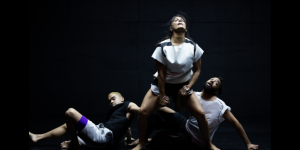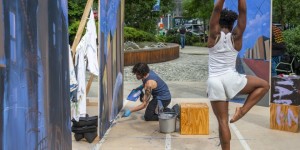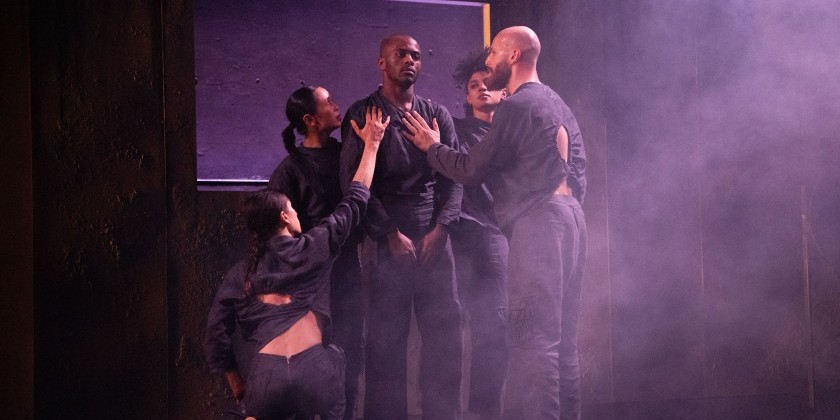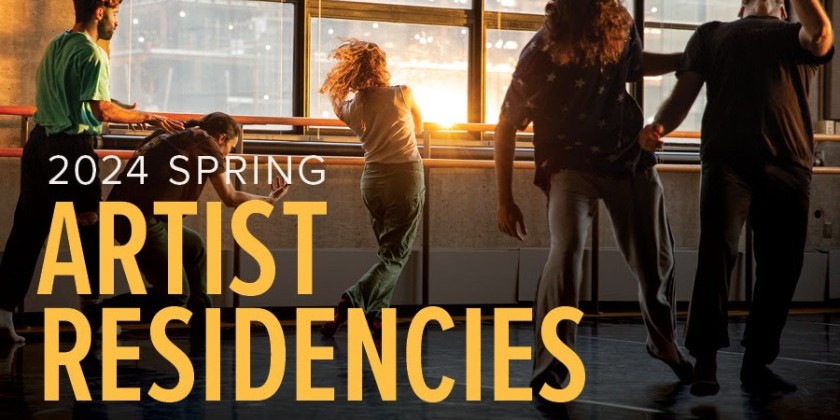IMPRESSIONS: Miguel Gutierrez's “I As Another” at Baryshnikov Arts Center
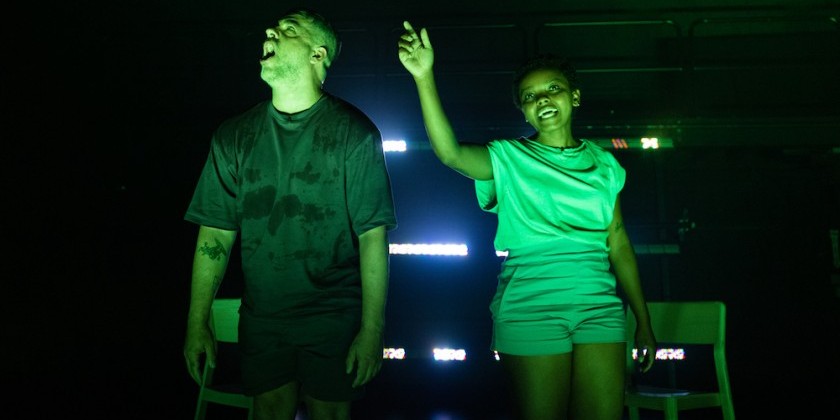
Choreographer, Performer, Sound Design, Text, Costumes: Miguel Gutierrez
Performer and Collaborator: Laila Franklin
Lighting Design: Carolina Ortiz // Additional Sound Design: Rosana Cabán
Stage Manager: Robert McIntyre // Dramaturgical Assistance: Stephanie Acosta
Management: Michelle Fletcher // Research Assistant: Amit Noy
American Sign Language Interpretation on May 5: Candace Davider and Gloria Vargas
Miguel Gutierrez doesn’t just make dances. He makes problems. Or rather, he gives problems shape and voice, shedding light on complexity and resistance where clarity and ease cannot be found. He has no essential truths to reveal, no lessons to impart, no cliches to reinforce; and it is this frank confrontation with the unknown that renders his work both affably opaque and unpredictably moving.
In I As Another, a duet for Gutierrez and the superb Laila Franklin, the performers mine the “virtual architecture of memory” in an exploration of intimacy and exchange. Gutierrez deploys a torrential litany of questions to question how we know, how we become known, and how we are essentially unknown and unknowable. Questions permeate and punctuate tenuously encapsulated narratives, forming an unintelligible wall of persistent inquiry that is at once fruitlessly broad and absurdly specific. The performers pose questions as tender as they are pedantic, their voices alternating and overlapping in what feels more like mutual recitation than conversation. What are they attempting to know? And what is left unknown by the very attempt?

The verbal and the visual wrestle in vain for prominence in an intensely vivid and loquacious environment. The performers’ voices are amplified and projected in such a way that they feel disembodied from the logic of their human-sized forms; their razor-sharp diction and guttural groans fill the air above their heads. Pop songs from the likes of Stevie Nicks, Willie Colón, and Gloria Estefan filter in and out of Rosana Cabán’s sensitively-constructed field of sound, together reinforcing an undercurrent of longing in both song lyrics and scripted dialogue. Carolina Ortiz’s lighting design is a creature of its own, animating the visual space with a backdrop of six continuously shifting LED light bars and lurid green and fuschia washes made thick and mysterious by a hard-working smoke machine. Vignettes briefly contained in warm spotlights skitter away as quickly as they arise, skewing senses of size, depth, and distance. At times the performers dissolve into darkness or glow into silhouette, the LEDs becoming as confrontational to the eyes as the questions are to the ears. The resulting atmosphere is both intimate and alien, a territory of infinite interiority—is this what the inside of Gutierrez’s mind looks like? (I think so — plus a few mylar unicorn balloons from his last outing.)
Juxtaposed against these sensory instabilities is the harmonious order and exquisite camp of a precisely-measured accumulative Electric Slide to Nicks’ “Sable on Blonde” (a song notably replete with questions). This is how our oh-so-dynamic duo is introduced to us, clad in simple shorts and t-shirts, Gutierrez’s purple to Franklin’s green. Together they turn crisp ninety-degree angles and smooth one-eighties, united in step as they breeze by each other through indifferent distance and vertiginous closeness. They are clean as can be in a formalized deadpan unison —pure technique in a ritualized vernacular — though Gutierrez can’t help but slip an almost imperceptible but undeniably saucy little jook into his shoulders. The accumulations are subtle and hypnotic in their logic, measuring the space to test its parameters and potentials: a blueprint by which to demolish.

The demolition happens in the little bits and devastating chunks taken out by questions: a jumble of whys, hows, wheres, whats, whos, and whens that blur the temporal boundaries of memory, observation, and speculation in the knowledge of self and other. The “wheres” are particularly niggling and pointedly posed to transcend geographical, social, emotional, and psychological dimensions. Their tones veer in and out of neutral, at times aggressive, protective, frustrated, dismissive, and resigned. The two sit uncomfortably in chairs and trace ambling vectors around the stage, gesturing vigorously as they talk about their upbringings — the place names blanked out — describing the layout of rooms in childhood homes and snippets of tactile memories contained within. Repetition accumulates into incoherence, a nonsensical foil to the metric logic of their crystal-clear Electric Slide.
And right on cue, “Sable on Blonde” pipes back through the changed air, recalling the comfort of the familiar dance as an entirely new catharsis pulses into being. The pair have burrowed so deep that they have no recourse but to shake it off, pound it out, let it all go; yet somehow a familiar rhythm continues to live in their bodies. Their physical clarity shines out of a lucid chaos: Gutierrez weighted, Franklin measured. As the music fades, we are left with the sounds of their labored breathing and sweat-sticky feet peeling off the dark floor. Their voices again, softer: some questions remain, while others delicately expand into existential non sequiturs. They bare themselves, questioning their very presence and purpose — "an honest performance is an oxymoron" — to close with an uncertain air that resigns itself to seeming over knowing. To begin at nothing and end precisely at nothing is an arc Gutierrez manages to fill to brimming with bits of unknowable everythings that together become somehow capable of fortifying the soul for all the questions to come.





